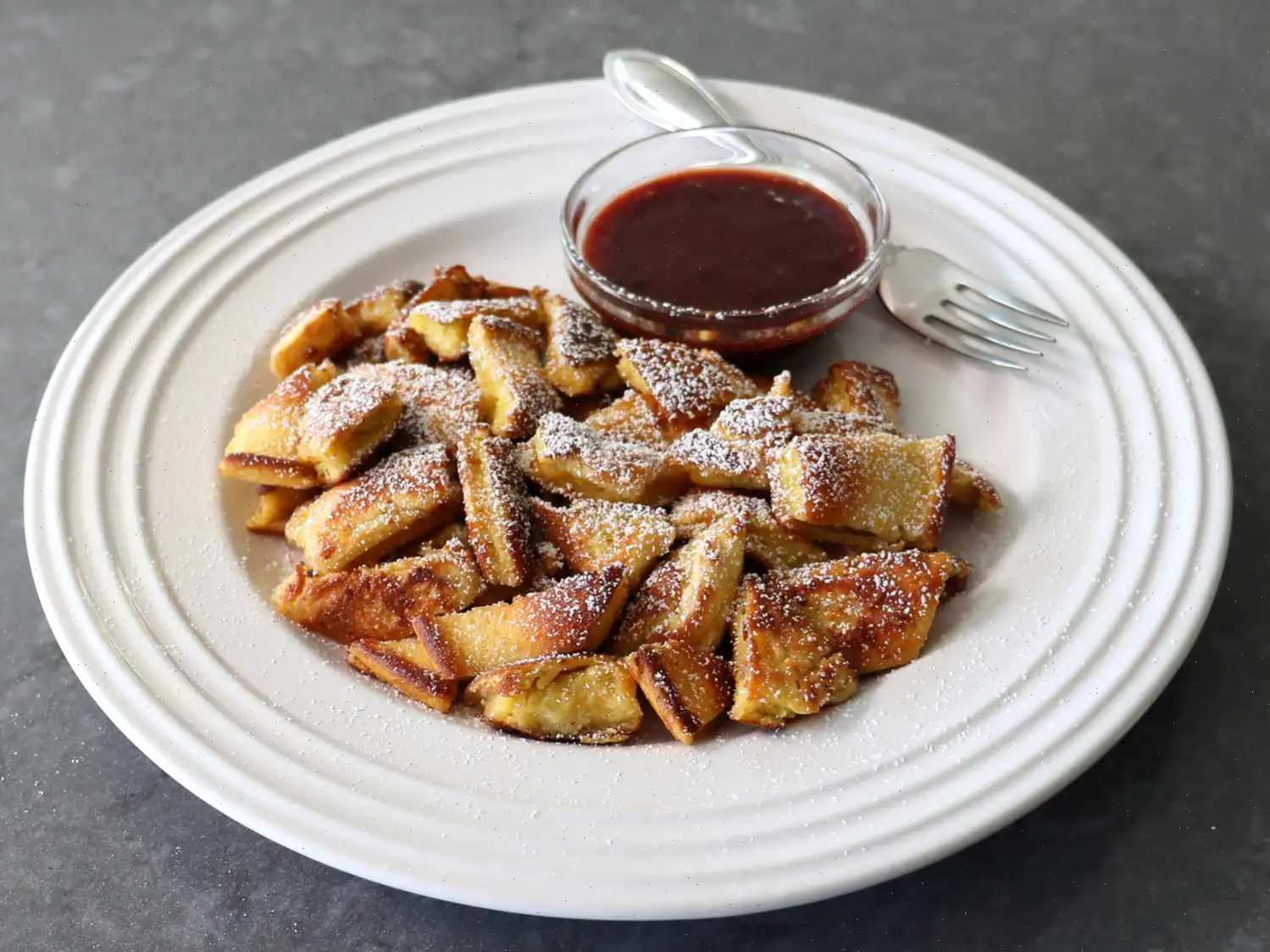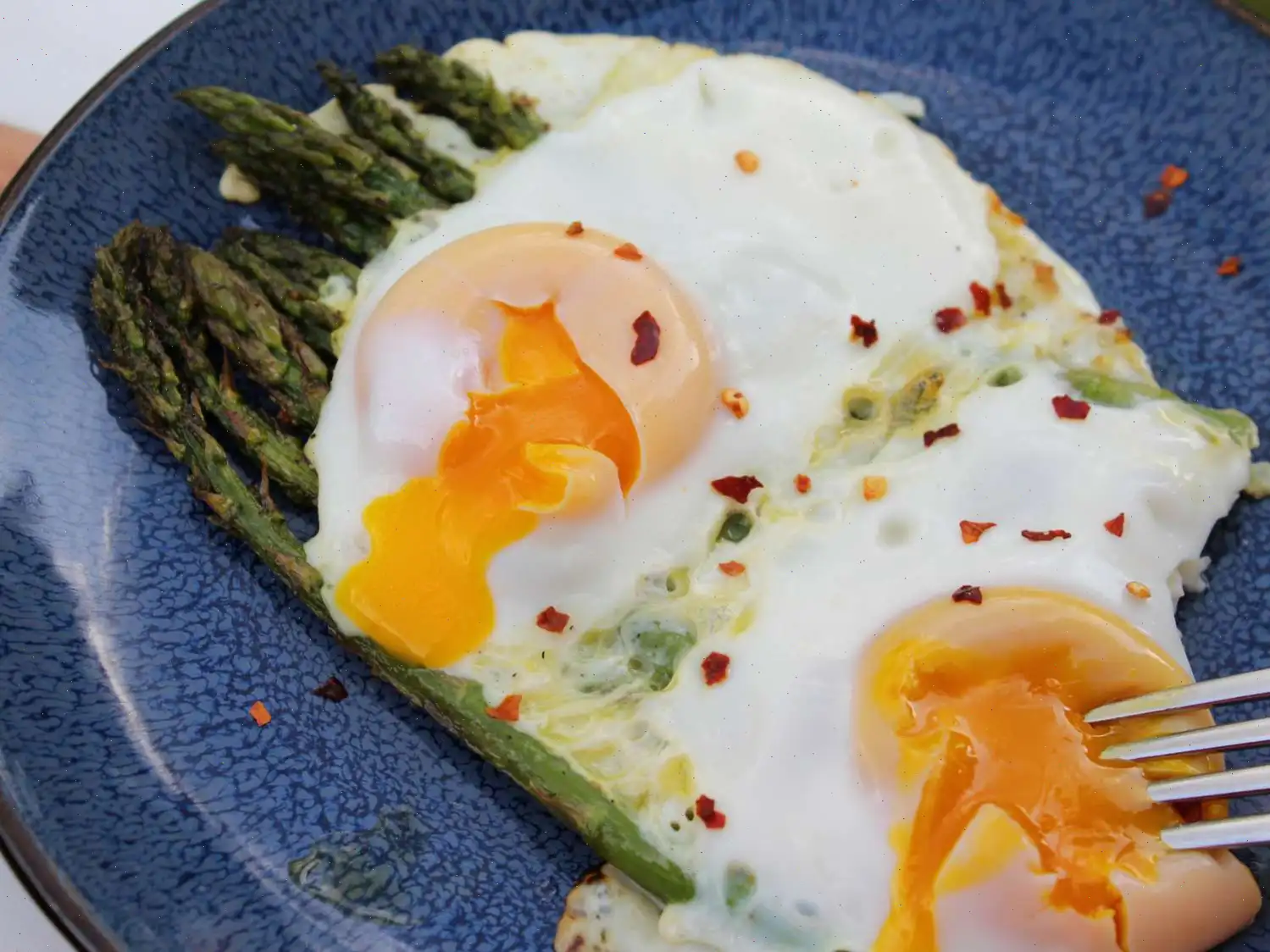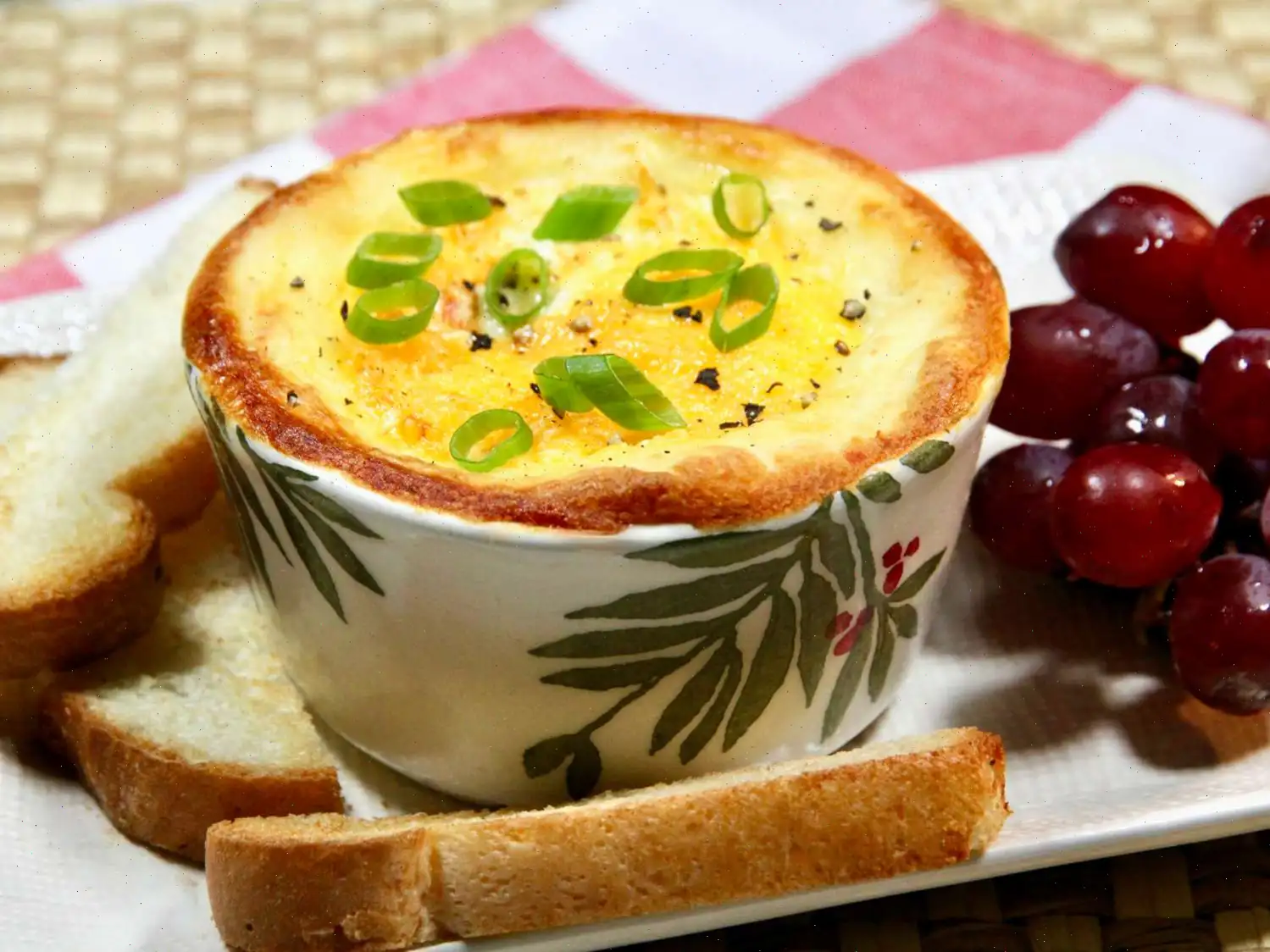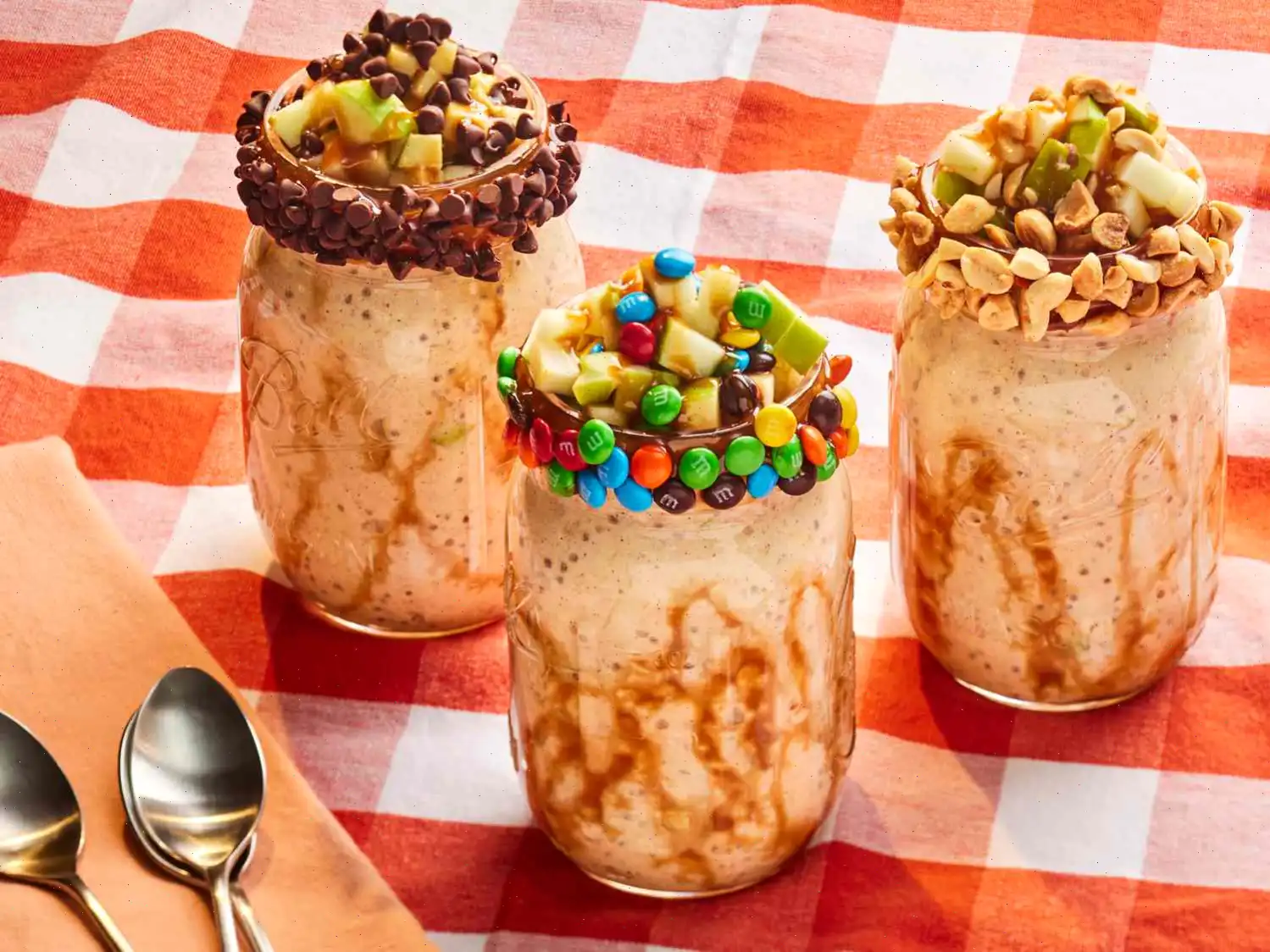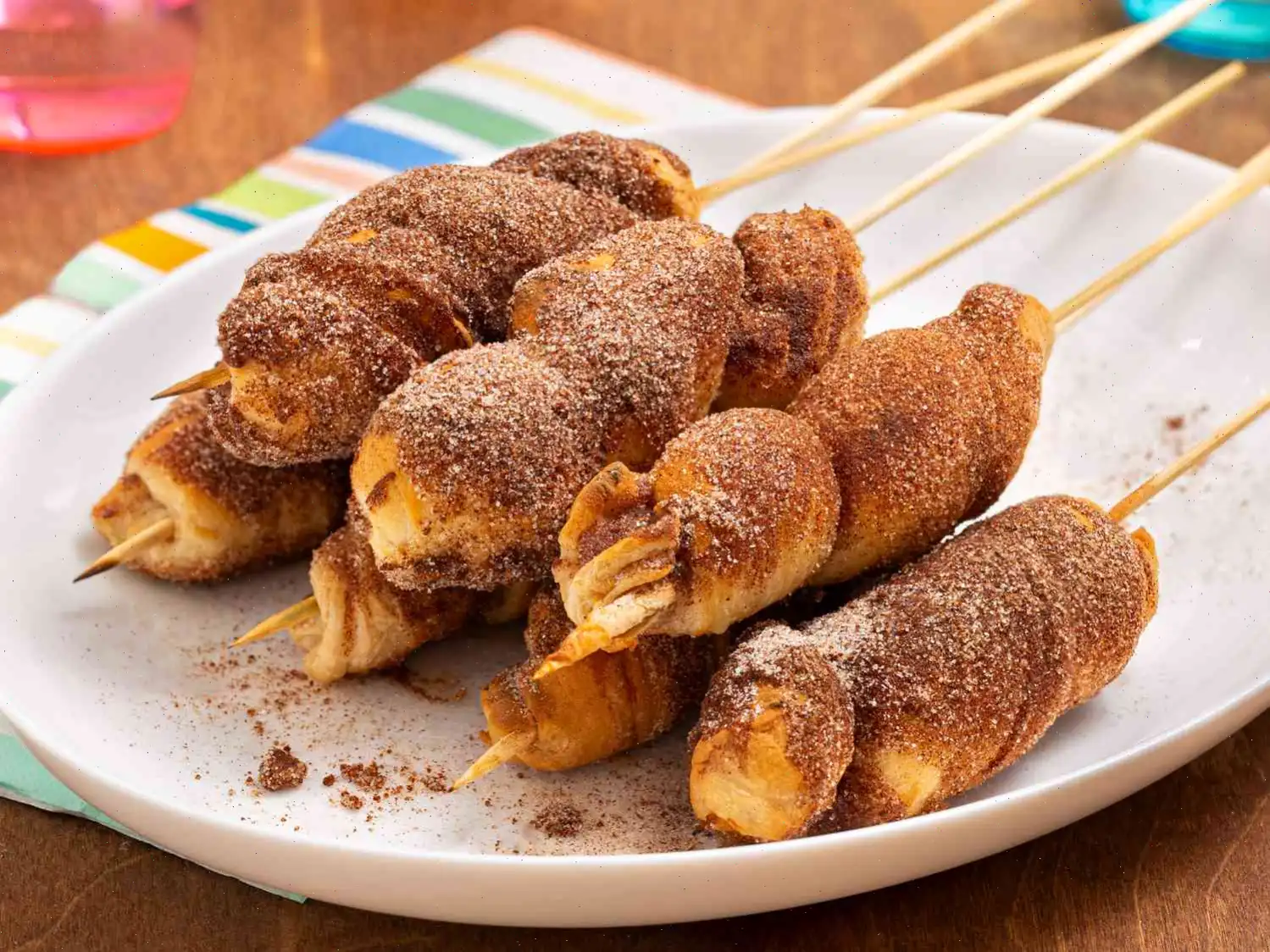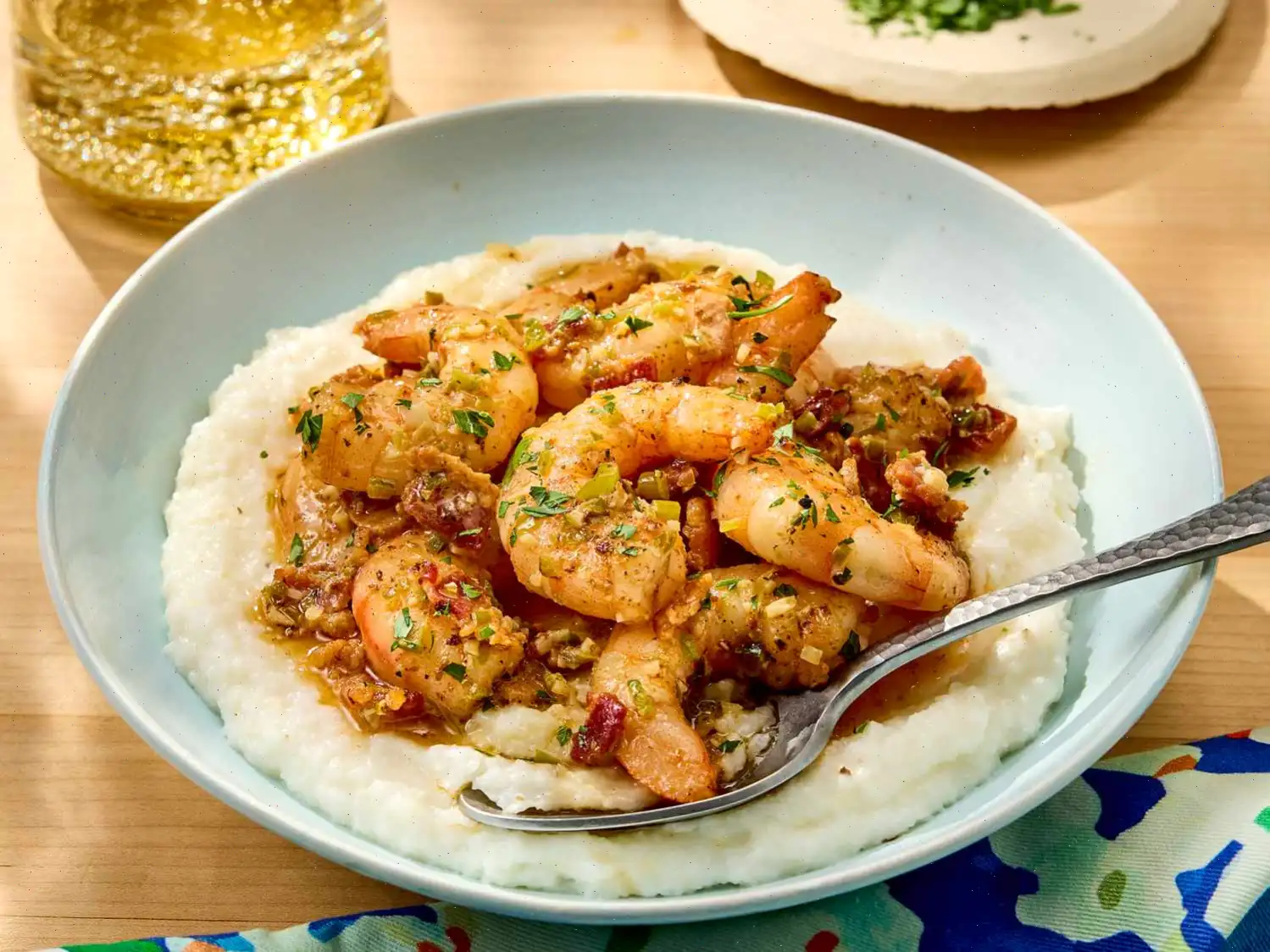
Kaiserschmarren – Austrian Torn Pancakes Recipe
There are certain recipes that you just know were invented by accident - and this Emperors Mess has to be one of them. Theres no way to know for sure, but Im picturing a sleep-deprived, possibly hung over cook trying to flip a pancake, and it misses the pan, breaking into pieces. So, he just tears the rest of it up, and a little bit of butter and sugar later, the Kaiserschmarren was born.
Of course, it wouldnt have had that name yet, since they wouldve had to serve it to Franz Joseph I, and he wouldve had to love it, which apparently he did. So, I think the real question is, what was it called before it got to the Kaiser? Historical questions aside, the only thing we really need to know is that this is a fun-to-make and delicious-to-eat pancake.
Enjoy making this traditional Austrian treat!
Ingredients
- 2 large eggs, separated
- 2/3 cup all-purpose flour
- 6 tablespoons milk
- 4 teaspoons white sugar, divided
- 1/2 teaspoon vanilla extract
- 1/4 teaspoon salt
- 1/4 teaspoon lemon juice
- 2 tablespoons unsalted butter, divided
- 1 teaspoon powdered sugar (for dusting, optional)
Directions
- In a large bowl, combine the egg yolks, flour, milk, 2 teaspoons of white sugar, vanilla extract, and salt. Whisk until the batter is smooth.
- In a separate glass, metal, or ceramic bowl, combine the egg whites and lemon juice. Beat until soft peaks form.
- Carefully fold the egg whites into the yolk mixture using a spatula. Do this gently to avoid deflating the batter.
- Heat 1 tablespoon of butter in a non-stick pan over medium heat. Once melted, pour the batter into the pan.
- Cover the pan and cook until the bottom is golden brown, and bubbles start to appear on the surface. This should take about 4 minutes.
- Use a spatula to cut the pancake into 4 sections and carefully flip them over. Cover the pan again and cook for another minute.
- Once cooked, use two spatulas to tear or cut the pancake into 1 to 2 inch pieces.
- Add the remaining tablespoon of butter in small pieces to the pan. Sprinkle the pancake pieces with the remaining 2 teaspoons of sugar.
- Continue to cook, tossing and stirring for a few minutes, until the pancake pieces are lightly caramelized at the edges.
- Serve immediately, dusted with powdered sugar if desired.
Nutrition Facts (per serving)
- Calories: 768
- Total Fat: 35g (45% Daily Value)
- Saturated Fat: 19g (94% Daily Value)
- Cholesterol: 440mg (147% Daily Value)
- Sodium: 719mg (31% Daily Value)
- Total Carbohydrates: 86g (31% Daily Value)
- Dietary Fiber: 2g (8% Daily Value)
- Total Sugars: 22g
- Protein: 24g (49% Daily Value)
- Calcium: 186mg (14% Daily Value)
- Iron: 6mg (32% Daily Value)
- Potassium: 368mg (8% Daily Value)

History of Kaiserschmarren
Kaiserschmarren, often referred to as "Emperor's Mess," is a traditional Austrian dessert that has become a beloved comfort food. The origins of this dish date back to the 19th century and are tied to the Austrian Emperor Franz Joseph I. Legend has it that the dish was invented after a kitchen mishap when the pancake batter fell apart while being cooked. The cook, not wanting to waste the ingredients, simply served the torn-up pancake to the Emperor, who enjoyed it immensely. The dish was then named "Kaiserschmarren" in his honor. Over time, this quirky and delicious dish has become a staple of Austrian cuisine.
Regional Variations
Kaiserschmarren is a dish that is enjoyed throughout Austria, especially in the alpine regions. However, it also has variations across neighboring countries like Germany and Hungary. In some areas, Kaiserschmarren is served with raisins, which add a burst of sweetness, while others prefer it plain or with different toppings such as applesauce or stewed plums. The dish is versatile and can be adapted to suit regional tastes, often influenced by the availability of local ingredients like fruits and nuts.
Distinguishing Kaiserschmarren from Similar Dishes
At first glance, Kaiserschmarren may appear to be similar to other types of pancakes or crepes, but its texture and preparation set it apart. Unlike traditional pancakes, which are made from a single batter cooked in one piece, Kaiserschmarren is intentionally torn into pieces after cooking, creating a fluffy, airy texture. Its also caramelized with butter and sugar, which gives it a crispy exterior and a sweet flavor. This distinguishes it from other European pancakes, which may be more uniform and less rich in flavor.
Where Kaiserschmarren is Typically Served
Kaiserschmarren is most commonly served in Austria, especially in traditional mountain inns, called "Gasthuser," where it is a popular dessert after a hearty meal. Its also a beloved treat at ski resorts and alpine restaurants, where the dish is often enjoyed in front of a warm fire after a day on the slopes. In Vienna, it is sometimes served as a decadent brunch or a light evening snack. Beyond Austria, the dish can be found in Germany and parts of Switzerland, often in rustic, countryside eateries.
Interesting Facts about Kaiserschmarren
- The name "Kaiserschmarren" translates to "Emperors Mess," referring to the chaotic yet delicious appearance of the dish after its torn into pieces.
- Some versions of Kaiserschmarren include raisins or nuts, but the classic recipe keeps it simple with just butter, sugar, and a dusting of powdered sugar.
- The dish is often paired with fruit compotes, like stewed plums, apples, or lingonberry sauce, adding a refreshing contrast to the rich, sweet pancake.
- In some regions, Kaiserschmarren is considered a perfect dish for a hearty breakfast or brunch, while in others, its treated as a dessert to round off a meal.
Whether you're enjoying it in a cozy Austrian chalet or making it at home, Kaiserschmarren is a dish that brings comfort and joy, offering a taste of Austrian culinary history in every bite.
You can listen to this recipe in AI audio format. Simply click the play button below to listen to the content in a format that suits you best. It’s a great way to absorb information on the go!
FAQ about Kaiserschmarren – Austrian Torn Pancakes Recipe
Comments
Margaret Robinson
03/13/2025 03:28:05 AM
Amazing variety of flavors, a simple and straightforward recipe, and it's a hit with my entire family--PERFECT!!
Linda Diaz
01/14/2024 05:56:17 AM
I was careful not to over-caramelize the pieces, only cooking them for a minute or two. Despite my caution, they still turned out with lovely caramelized edges and a fluffy interior! This recipe was fantastic, and it was enjoyable to prepare!
Maria Mitchell
09/16/2022 02:51:39 PM
This was an absolute blast to prepare! My family polished off every last bite. The only modification I made was using cake flour instead.
Sarah White
06/24/2023 09:32:46 PM
My mother used to make this dish for us when we were kids, and recently my sister prepared it for my youngest son and I. It had been 25 years since I had last tasted it. Stumbling upon your recipe was a delightful surprise for me. I shared your video with my sister, and she reciprocated by sending me the recipe from our mom's old cookbook written in German. Translating it will surely be an amusing task due to its unique measurements and charming descriptions of the process. I hope you enjoy making it as much as we do, and thank you for sharing this wonderful recipe. By the way, we like to serve it with a can of canned peaches or pears, drizzling the fruit juice over the sugared "nuggets" for an extra burst of flavor.


